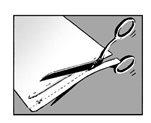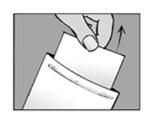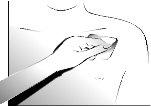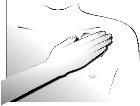
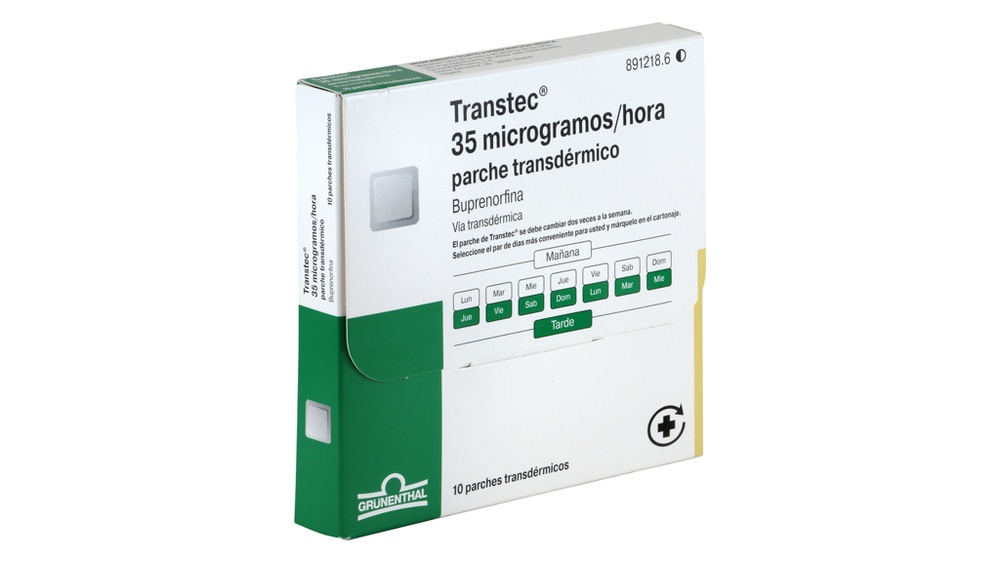
ТРАНСТЕК 35 микрограммов/час ТРАНСДЕРМАЛЬНЫЙ ПЛАСТЫРЬ

Спросите врача о рецепте на ТРАНСТЕК 35 микрограммов/час ТРАНСДЕРМАЛЬНЫЙ ПЛАСТЫРЬ

Инструкция по применению ТРАНСТЕК 35 микрограммов/час ТРАНСДЕРМАЛЬНЫЙ ПЛАСТЫРЬ
Введение
Инструкция: информация для пользователя
Транстек35 микрограммов/час трансдермальная пленка
Бупренорфин
Прочитайте внимательно всю инструкцию перед началом использования этого лекарства, поскольку она содержит важную информацию для вас.
- Сохраните эту инструкцию, поскольку вам может потребоваться прочитать ее снова.
- Если у вас есть какие-либо вопросы, проконсультируйтесь с вашим врачом или фармацевтом.
- Это лекарство было назначено только вам, и его не следует давать другим людям, даже если у них такие же симптомы, как у вас, поскольку оно может нанести им вред.
- Если вы испытываете побочные эффекты, проконсультируйтесь с вашим врачом или фармацевтом, даже если это побочные эффекты, которые не перечислены в этой инструкции. См. раздел 4.
Содержание инструкции
- Что такое Транстек и для чего он используется
- Что вам нужно знать перед началом использования Транстека
- Как использовать Транстек
- Возможные побочные эффекты
- Хранение Транстека
- Содержание упаковки и дополнительная информация
1. Что такое Транстек и для чего он используется
Транстек - это обезболивающее средство (лекарство для облегчения боли) для облегчения умеренной или сильной онкологической боли и сильной боли, которая не реагирует на другие типы обезболивающих средств. Транстек действует через кожу. Когда трансдермальная пленка наносится на кожу, активное вещество бупренорфин проникает через кожу в кровь. Бупренорфин - это опиоид (лекарство для облегчения сильной боли), который уменьшает боль, воздействуя на центральную нервную систему (в определенных нервных клетках спинного мозга и мозга). Эффект трансдермальной пленки длится до максимум четырех дней. Транстек не подходит для лечения острой боли (кратковременной).
2. Что вам нужно знать перед началом использования Транстека
Не используйте Транстек
- если вы аллергичны к бупренорфину или любому другому компоненту этого лекарства (перечисленному в разделе 6),
- если вы зависимы от сильных обезболивающих средств (опиоидов),
- если у вас есть заболевание, при котором у вас есть большая трудность с дыханием или при котором это может произойти,
- если вы принимаете ингибиторы МАО (определенные лекарства для лечения депрессии) или принимали их в течение двух последних недель перед лечением Транстеком (см. "Использование Транстека с другими лекарствами"),
- в случае миастении (типа тяжелой мышечной слабости),
- в случае делирия тременс (спутанности и дрожания, вызванных отказом от алкоголя после привычной чрезмерной потребления или во время эпизода повышенного потребления алкоголя),
- в случае беременности.
Транстек не должен использоваться для лечения синдрома абстиненции у наркозависимых.
Предостережения и меры предосторожности
Толерантность, зависимость и аддикция
Это лекарство содержит бупренорфин, опиоидное вещество. Повторное использование опиоидов может уменьшить эффективность лекарства (ваш организм привыкает к лекарству, это то, что называется толерантностью). Повторное использование Транстека также может вызвать зависимость, злоупотребление и аддикцию, что может привести к потенциально смертельной передозировке. Риск побочных эффектов может увеличиться с более высокой дозой и более длительным использованием.
Зависимость или аддикция могут заставить вас чувствовать, что вы больше не контролируете количество лекарства, которое вам нужно принять, или как часто вам нужно его принимать.
Риск стать зависимым или аддиктированным варьируется от человека к человеку. Вы можете иметь более высокий риск стать зависимым или аддиктированным от Транстека, если:
- У вас или у члена вашей семьи есть история злоупотребления или зависимости от алкоголя, рецептурных лекарств или незаконных веществ ("аддикция").
- Вы курите.
- У вас когда-либо были проблемы с настроением (депрессия, тревога или расстройство личности) или вы получали лечение от психиатра за другие психические заболевания.
Если вы заметите любой из следующих признаков во время приема Транстека, это может быть сигналом того, что вы стали зависимыми или аддиктированными:
- Вам нужно принимать лекарство дольше, чем рекомендовано вашим врачом.
- Вам нужно принимать больше доз, чем рекомендовано.
- Вы используете лекарство по причинам, отличным от тех, которые назначены, например, "чтобы успокоиться" или "чтобы помочь вам заснуть".
- Вы сделали повторные попытки безуспешно бросить или контролировать использование лекарства.
- Вы не чувствуете себя хорошо, когда перестаете принимать лекарство, и чувствуете себя лучше, когда снова начинаете его принимать ("симптомы абстиненции").
Если вы заметите любой из этих признаков, поговорите с вашим врачом, чтобы обсудить наиболее подходящую терапевтическую стратегию в вашем случае, включая то, когда следует прекратить прием лекарства и как сделать это безопасно (см. раздел 3 "Если вы прекратите лечение Транстеком").
Проконсультируйтесь с вашим врачом или фармацевтом перед началом использования Транстека
- если вы недавно выпили много алкоголя,
- если у вас есть судорожные приступы или конвульсии (приступы),
- если у вас изменено сознание (чувство головокружения или обморока) по неизвестной причине,
- если вы находитесь в состоянии шока (одним из признаков может быть холодный пот),
- если у вас повышенное внутричерепное давление (например, после черепно-мозговой травмы или при заболевании мозга) без возможности искусственной вентиляции легких,
- если у вас есть трудности с дыханием или вы принимаете другие лекарства, которые могут сделать ваше дыхание более медленным или слабым (см. "Использование Транстека с другими лекарствами"),
- если у вас есть депрессия или другие заболевания, которые лечатся антидепрессантами.
Использование этих лекарств вместе с Транстеком может вызвать серотониновый синдром, потенциально смертельное заболевание (см. "Использование Транстека с другими лекарствами"),
- если у вас есть проблемы с печенью.
Обратите внимание также на следующие меры предосторожности:
- Лихорадка и жаркая окружающая среда могут привести к большим, чем обычно, количествам бупренорфина в крови. Кроме того, жаркая окружающая среда может помешать трансдермальной пленке прикрепиться к коже должным образом. Поэтому проконсультируйтесь с вашим врачом, если у вас есть лихорадка, и не подвергайтесь воздействию источников тепла (например, сауны, инфракрасных ламп, электрических одеял или грелок).
Спортсменам следует предупредить, что это лекарство может дать положительный результат в тестах на допинг.
Расстройства дыхания, связанные со сном
Транстек может вызвать расстройства дыхания, связанные со сном, такие как апноэ во сне (затруднения дыхания во сне) и гипоксемия, связанная со сном (низкие уровни кислорода в крови). Симптомы могут включать затруднения дыхания во сне, ночные пробуждения из-за трудностей с дыханием, трудности с поддержанием сна или чрезмерную сонливость днем. Свяжитесь с вашим врачом, если вы или кто-то другой заметите эти симптомы. Ваш врач может рассмотреть возможность снижения дозы.
Дети и подростки
Транстек не должен использоваться у людей моложе 18 лет, поскольку пока нет опыта использования этого лекарства в этой возрастной группе.
Использование Транстека с другими лекарствами
Сообщите вашему врачу или фармацевту, если вы используете, недавно использовали или можете использовать любое другое лекарство.
- Транстек не должен использоваться вместе с ингибиторами МАО (определенными лекарствами для лечения депрессии) или если вы принимали их в течение двух последних недель.
- Транстек может вызвать сонливость, рвоту, головокружение или сделать дыхание более медленным или слабым у некоторых пациентов. Эти побочные эффекты могут усиливаться, если вы принимаете другие лекарства, которые могут вызывать такие же эффекты. Эти другие лекарства включают другие сильные обезболивающие средства (опиоиды), определенные лекарства для сна, анестетики и лекарства для лечения определенных психических заболеваний, такие как транквилизаторы, антидепрессанты, нейролептики и габапентин или прегабалин, используемые для лечения эпилепсии или боли, связанной с проблемами в нерве (нейропатическая боль).
Сообщите вашему врачу или фармацевту, если вы принимаете:
- лекарства для лечения аллергии и для лечения рвоты или тошноты во время путешествий (антигистаминные или противорвотные средства);
- лекарства для лечения психических расстройств (антипсихотические или нейролептические средства);
- миорелаксанты;
- лекарства для лечения болезни Паркинсона.
Совместное использование Транстека с седативными средствами или лекарствами для лечения бессонницы (например, бензодиазепинами) увеличивает риск сонливости, дыхательных затруднений (депрессии дыхания), комы и может быть потенциально смертельным. Из-за этого совместное использование следует рассматривать только тогда, когда не возможны другие варианты лечения. Однако, если ваш врач назначает вам Транстек с седативными средствами, он должен ограничить дозу и продолжительность совместного лечения. Сообщите вашему врачу о всех седативных средствах, которые вы принимаете, и строго следуйте рекомендациям вашего врача по дозировке. Будет полезно сообщить вашим друзьям и членам семьи о признаках и симптомах, указанных выше. Сообщите вашему врачу, если вы испытываете любой из этих симптомов.
- Если Транстек используется вместе с некоторыми лекарствами, эффект трансдермальной пленки может усиливаться. Эти лекарства включают, например, определенные антиинфекционные и противогрибковые средства (например, содержащие эритромицин или кетоконазол) или лекарства для лечения ВИЧ (например, содержащие ритонавир).
- Если Транстек используется вместе с другими лекарствами, эффект трансдермальной пленки может уменьшаться. Эти лекарства включают, например, дексаметазон, определенные продукты для лечения эпилепсии (например, содержащие карбамазепин или фенитоин) или лекарства, используемые для лечения туберкулеза (например, рифампицин).
- Некоторые лекарства могут усиливать побочные эффекты Транстека и иногда могут вызывать очень серьезные реакции. Не принимайте никаких других лекарств во время использования Транстека без предварительной консультации с вашим врачом, особенно антидепрессанты, такие как циталопрам, эсциталопрам, флуоксетин, флуvoxamina, пароксетин, сертралин, дулоксетин, венлафаксин, амитриптилин, доксепин или тримипрамин. Эти лекарства могут взаимодействовать с Транстеком, и вы можете испытывать симптомы, такие как непроизвольные мышечные сокращения, включая мышцы, контролирующие движение глаз, агитация, галлюцинации, кома, чрезмерное потоотделение, дрожание, усиление рефлексов, увеличение мышечного тонуса, температура тела выше 38 °C. Свяжитесь с вашим врачом, если вы испытываете эти симптомы.
Использование Транстека с продуктами питания, напитками и алкоголем
Не следует потреблять алкоголь во время использования Транстека. Алкоголь может усиливать определенные побочные эффекты трансдермальной пленки и вы можете не чувствовать себя хорошо.
Употребление грейпфрутового сока во время лечения может усиливать эффекты Транстека.
Беременность, лактация и фертильность
Если вы беременны или кормите грудью, считаете, что можете быть беременной или планируете стать беременной, проконсультируйтесь с вашим врачом или фармацевтом перед использованием этого лекарства.
Пока нет достаточного опыта использования Транстека у беременных женщин. Поэтому Транстек не должен использоваться во время беременности.
Бупренорфин, активное вещество, содержащееся в трансдермальной пленке, проникает в грудное молоко и ингибирует его производство. Поэтому Транстек не должен использоваться во время лактации.
Вождение и использование машин
Транстек может вызывать головокружение, сонливость или двойное зрение и может изменять ваши рефлексы так, что вы не сможете реагировать должным образом или достаточно быстро в случае внезапных или неожиданных ситуаций.
Это особенно актуально:
- в начале лечения
- при изменении дозы
- при переходе от другого лекарства к этому
- если вы также принимаете другие лекарства, которые действуют на мозг
- если вы потребляете алкоголь
Если вы испытываете такие эффекты, не следует водить транспорт или управлять машинами во время использования Транстека. Это также относится к окончанию лечения Транстеком. Не водите и не управляйте машинами хотя бы в течение 24 часов после снятия трансдермальной пленки.
В случае сомнений проконсультируйтесь с вашим врачом или фармацевтом.
3. Как использовать Транстек
Следуйте точно инструкциям по применению этого препарата, указанным вашим врачом. В случае сомнений проконсультируйтесь с вашим врачом или фармацевтом.
До начала лечения и периодически в течение лечения ваш врач будет говорить с вами о том, чего можно ожидать от использования Транстека, когда и как долго его следует принимать, когда следует обращаться к врачу и когда следует прекратить его прием (см. также «Если вы прекратите лечение Транстеком»).
Транстек выпускается в трех дозировках: Транстек 35 микрограммов/час пластырь трансдермальный, Транстек 52,5 микрограммов/час пластырь трансдермальный и Транстек 70 микрограммов/час пластырь трансдермальный.
Ваш врач выбрал этот пластырь Транстека как наиболее подходящий для вас.
В течение лечения ваш врач может заменить пластырь трансдермальный, который вы используете, на другой с меньшей или большей силой, если это необходимо.
Рекомендуемая доза:
Взрослые
Следуйте этим инструкциям, если только ваш врач не дал вам других указаний.
Нанесите Транстек (как описано ниже) и замените его после четырех дней, максимум. Чтобы облегчить его использование, вы можете менять пластырь 2 раза в неделю в определенные дни, например: «всегда по понедельникам утром и по четвергам вечером». Чтобы помочь вам запомнить, когда следует заменить пластырь трансдермальный, запишите это на упаковке. Если ваш врач указал вам принимать другие обезболивающие препараты в дополнение к пластырю трансдермальному, следуйте точно инструкциям вашего врача, иначе вы не получите полной пользы от лечения Транстеком.
Применение у детей и подростков
Транстек не должен использоваться у лиц младше 18 лет, поскольку пока нет опыта его применения в этой возрастной группе.
Пациенты пожилого возраста
Коррекция дозы у пациентов пожилого возраста не требуется.
Пациенты с нарушениями функции почек / пациенты, находящиеся на диализе
У пациентов с нарушением функции почек и пациентов, находящихся на диализе, коррекция дозы не требуется.
Пациенты с нарушением функции печени
У пациентов с нарушением функции печени интенсивность и продолжительность действия Транстека могут быть затронуты. Если вы относитесь к этой группе пациентов, ваш врач будет более внимательно следить за вами.
Способ применения
Перед нанесением пластыря трансдермального
| Грудь
| |
Спина
|
- Если выбранная область имеет волосы, обрежьте их ножницами. Не брейте!
- Избегайте областей кожи, которые покраснели, раздражены или имеют другие виды пятен, например, крупные рубцы.
- Область кожи, которую вы выберете, должна быть сухой и чистой. Если необходимо, вымойте ее холодной или теплой водой. Не используйте мыло или другие моющие средства. После горячего душа или ванны подождите, пока кожа полностью не высохнет и не остынет. Не наносите лосьоны, кремы или мази на выбранную область. Это может помешать пластырю трансдермальному прилипнуть должным образом.
Нанесение пластыря трансдермального:
| Шаг 1: Каждый пластырь трансдермальный упакован в герметичный пакет. Разрежьте ножницами пакет, предназначенный для детей, по пунктирной линии. Будьте осторожны, чтобы не повредить пластыри трансдермальные. Извлеките пластырь трансдермальный. |
| Шаг 2: Клейкая сторона пластыря трансдермального покрыта серебряной защитной пленкой. Аккуратно снимите половинупленки. Постарайтесь не трогать клеевую сторону пластыря трансдермального. |
| Шаг 3: Прикрепите пластырь трансдермальный к выбранной области кожи и снимите остальную часть пленки. |
| Шаг 4: Прижмите пластырь трансдермальный к коже ладонью руки и медленно считайте до 30. Убедитесь, что весь пластырь трансдермальный находится в контакте с кожей, особенно края. |
Во время ношения пластыря трансдермального
Вы можете носить пластырь трансдермальный не более 4 дней. Если пластырь трансдермальный нанесен правильно, риск его отсоединения низок. Вы можете принимать душ, ванну или плавать, носив его. Однако не подвергайте пластырь трансдермальный воздействию экстремального тепла (например, сауны, инфракрасных ламп, электрических одеял или горячих водяных мешков).
В случае, если ваш пластырь трансдермальный отсоединился до того, как вам нужно было его заменить, не используйте тот же пластырь трансдермальный снова. Нанесите новый сразу же (см. «Замена пластыря трансдермального» ниже).
Замена пластыря трансдермального
- Аккуратно удалите старый пластырь.
- Сложите его пополам с клеевой стороной внутрь.
- Утилизируйте его с осторожностью, вне поля зрения и досягаемости детей.
- Нанесите новый пластырь трансдермальный на другую область кожи (как описано ранее). Должно пройти не менее 1 недели, прежде чем вы сможете нанести новый пластырь на ту же область кожи.
Продолжительность лечения
Ваш врач укажет вам продолжительность лечения Транстеком. Не прекращайте лечение самостоятельно, поскольку боль может вернуться, и вы можете чувствовать себя плохо (см. также «Если вы прекратите лечение Транстеком»).
Если вы считаете, что эффект Транстека слишком сильный или слабый, сообщите об этом вашему врачу или фармацевту.
Если вы примете больше Транстека, чем следует
Если это произойдет, могут возникнуть признаки передозировки бупренорфином. Передозировка может усилить побочные эффекты бупренорфина, такие как сонливость, тошнота и рвота. У вас также могут быть зрачки, как точки, и дыхание может стать медленным и слабым. Вы также можете испытать коллапс сердечно-сосудистой системы.
Как только вы осознаете, что использовали больше пластырей трансдермальных Транстека, чем следует, удалите лишние пластыри трансдермальные и немедленно проконсультируйтесь с вашим врачом или фармацевтом.
В случае передозировки или случайного приема обратитесь в Центр токсикологической информации, телефон 91 562 04 20, указав препарат и количество, использованное.
Если вы забыли использовать Транстек
Если вы забыли нанести пластырь, нанесите новый пластырь трансдермальный как можно скорее. Это изменит вашу схему, например: если вы обычно наносили пластырь трансдермальный по понедельникам утром и по четвергам вечером, но забыли и не нанесли новый пластырь трансдермальный до среды, то с этого момента вам нужно будет менять пластыри трансдермальные по средам и субботам. Запишите новые дни в календаре упаковки. Если вы заменяете пластырь трансдермальный слишком поздно, боль может вернуться. В этом случае проконсультируйтесь с вашим врачом.
Никогда не наносите больше одного пластыря трансдермального, чтобы компенсировать пропущенный!
Если вы прекратите лечение Транстеком
Если вы прекратите или завершите лечение Транстеком слишком рано, боль вернется. Если вы хотите прекратить лечение из-за неприятных побочных эффектов, проконсультируйтесь с вашим врачом. Ваш врач скажет вам, что можно сделать и могут ли быть назначены другие препараты.
Некоторые люди могут испытывать эффекты после длительного использования сильных обезболивающих препаратов и их отмены. Риск возникновения эффектов после отмены Транстека очень низок. Однако, если вы чувствуете беспокойство, тревогу, нервозность или дрожь, если вы гиперактивны, испытываете трудности со сном или проблемы с пищеварением, проконсультируйтесь с вашим врачом.
Если у вас есть другие вопросы о применении этого препарата, спросите вашего врача или фармацевта.
4. Возможные побочные эффекты
Как и все препараты, этот препарат может вызывать побочные эффекты, хотя не все люди испытывают их.
Побочные эффекты классифицируются следующим образом:
Могут возникать у более 1 человека из 10 |
Могут возникать у более 1 человека из 100 |
Могут возникать у менее 1 человека из 100 |
Могут возникать у менее 1 человека из 1000 |
Могут возникать у менее 1 человека из 10 000 |
Частота не может быть оценена по доступным данным |
Были зарегистрированы следующие побочные эффекты:
Расстройства иммунной системы
Очень редко: тяжелые аллергические реакции (см. ниже)
Расстройства метаболизма и питания
Р потеря аппетита
Психические расстройства
Не часто: путаница, нарушения сна, беспокойство
Редко: галлюцинации, тревога, кошмары, снижение либидо
Очень редко: зависимость, изменения настроения
Расстройства нервной системы
Часто: головокружение, головная боль
Не часто: различные степени седации (спокойствия), от усталости до путаницы
Редко: трудности с концентрацией внимания, нарушения речи, путаница, нарушения равновесия, аномальные ощущения в коже (чувство жара, онемения или покалывания)
Очень редко: мышечные спазмы, нарушения вкуса
Расстройства органов зрения
Редко: нарушения зрения, размытое зрение, отек век
Очень редко: зрачки, как точки
Расстройства слуха и вестибулярного аппарата
Очень редко: боль в ухе
Расстройства сердечно-сосудистой системы
Не часто: нарушения кровообращения (такие как гипотония или редко потеря сознания из-за падения артериального давления)
Редко: приливы крови к лицу
Расстройства дыхательной системы и средостения
Часто: одышка
Редко: трудности с дыханием (угнетение дыхания)
Очень редко: гипервентилация, икота
Расстройства желудочно-кишечного тракта
Очень часто: тошнота
Часто: рвота, запор
Не часто: сухость во рту
Редко: изжога
Очень редко: рвотные позывы
Расстройства кожи (обычно в месте применения)
Очень часто: покраснение, зуд
Часто: изменения кожи (сыпь, обычно при повторном применении), усиление потоотделения
Не часто: высыпания
Редко: крапивница
Очень редко: пузырьки, волдыри
Частота не известна: контактный дерматит (кожная сыпь с воспалением, которая может включать чувство жжения), изменение цвета кожи
Расстройства мочевыделительной системы и почек
Не часто: задержка мочи (меньшее количество мочи, чем обычно), нарушения мочеиспускания
Расстройства репродуктивной системы
Редко: трудности с эрекцией
Общие расстройства
Часто: отек (отек ног), усталость
Не часто: слабость (упадок сил)
Редко: симптомы абстиненции, реакции в месте введения
Очень редко: боль в груди
Если вы заметите любой из вышеуказанных побочных эффектов, проконсультируйтесь с вашим врачом как можно скорее.
В некоторых случаях могут возникать местные аллергические реакции с выраженными признаками воспаления. В этих случаях следует прекратить лечение Транстеком после консультации с вашим врачом.
Если вы испытываете воспаление рук, ног, колен, лица, губ, рта или горла, которое может вызвать трудности с глотанием или дыханием, крапивницу, обморок, желтушность кожи и глаз (также называемую желтухой), удалите пластырь трансдермальный и проконсультируйтесь с вашим врачом или обратитесь в ближайшую больницу немедленно. Это могут быть симптомы очень редкой тяжелой аллергической реакции.
Некоторые люди могут испытывать симптомы отмены после длительного использования сильных обезболивающих препаратов и их отмены. После лечения Транстеком риск возникновения симптомов абстиненции низок. Однако, если вы чувствуете беспокойство, тревогу, нервозность, гиперактивность, нарушения сна или проблемы с пищеварением, проконсультируйтесь с вашим врачом.
Сообщение о побочных эффектах
Если вы испытываете любой побочный эффект, проконсультируйтесь с вашим врачом или фармацевтом, даже если это возможные побочные эффекты, которые не указаны в этом описании. Вы также можете сообщить о них напрямую через Испанскую систему фармаковигиланса для лекарственных средств для человека: https://www.notificaram.es. Сообщая о побочных эффектах, вы можете внести свой вклад в предоставление более полной информации о безопасности этого препарата.
5. Хранение Транстека
Храните этот препарат в безопасном месте, где другие люди не могут получить к нему доступ. Он может вызвать серьезный вред и быть смертельным для людей, которые принимают его случайно или намеренно, когда он не был назначен им.
Держите этот препарат вне поля зрения и досягаемости детей .
Не используйте этот препарат после даты истечения срока годности, указанной на упаковке и на пакете после «Срок годности». Дата истечения срока годности — последний день месяца, указанного.
Этот препарат не требует особых условий хранения.
Лекарственные препараты не должны выбрасываться в канализацию или мусор. Поместите упаковку и лекарственные препараты, которые вам больше не нужны, в пункт SIGRE аптеки. В случае сомнений спросите вашего фармацевта, как утилизировать упаковку и лекарственные препараты, которые вам больше не нужны. Таким образом, вы поможете защитить окружающую среду.
6. Содержимое упаковки и дополнительная информация
Состав Транстека
- Активное вещество — бупренорфин.
Транстек 35 микрограммов/час пластырь трансдермальный | Содержит 20 мг бупренорфина и выпускает около 35 микрограммов бупренорфина в час. Площадь пластыря трансдермального, содержащего активное вещество, составляет 25 см2. |
- Другие компоненты:
Клейкая матрица: олеат (Z)-9-октадецен-1-ил; повидон K90; кислота 4-оксопентановая; поли[кислота акриловая-со-бутилакрилат-со-(2-этилгексил)акрилат-со-винилакетат] (5:15:75:5), перекрестно-связанный (для области, содержащей бупренорфин) или не перекрестно-связанный (для области без бупренорфина); разделительная пленка между клеевыми матрицами с и без бупренорфина: пленка из поли(этилентерефталата), покрытие: ткань из поли(этилентерефталата). Защитная пленка для выпуска в передней части, покрывающая клеевую матрицу, содержащую бупренорфин, для удаления перед нанесением пластыря трансдермального: пленка из поли(этилентерефталата), силиконизированная, покрытая алюминием с одной стороны.
Внешний вид продукта и содержимое упаковки
Транстек — это пластыри трансдермальные цвета кожи с закругленными углами, идентифицируемые как: Транстек 35 мкг/час, бупренорфин 20 мг.
Транстек выпускается в упаковках, содержащих 3, 4, 5, 6, 8, 10, 11, 12, 16, 18, 20 или 24 пластыря трансдермальных, упакованных индивидуально в пакеты, защищенные от детей.
Возможно, не все размеры упаковок будут продаваться.
Владелец разрешения на маркетинг и производитель
Владелец разрешения на маркетинг
Grünenthal Pharma, S.A.
Доктор Заменгоф, 36 - 28027 Мадрид, Испания
Производитель
Grünenthal GmbH
Циглерштрассе 6 - D - 52078 Ахен, Германия
Этот препарат разрешен к применению в государствах-членах Европейского экономического пространства и в Великобритании (Северной Ирландии) под следующими названиями:
Германия Транстек PRO®
Австрия Транстек ®
Бельгия Транстек ®
Словения Транстек ®
Испания Транстек ®
Ирландия Транстек ®
Италия Транстек ®
Люксембург Транстек ®
Португалия Транстек ®
Великобритания (Северная Ирландия) Транстек ®
Дата последнего пересмотра этого описания: ноябрь 2024 г.
Подробная и актуальная информация о этом препарате доступна на сайте Испанского агентства по лекарственным средствам и медицинским изделиям (AEMPS) http://www.aemps.gob.es/


Сколько стоит ТРАНСТЕК 35 микрограммов/час ТРАНСДЕРМАЛЬНЫЙ ПЛАСТЫРЬ в Испании в 2025 году?
Средняя цена на ТРАНСТЕК 35 микрограммов/час ТРАНСДЕРМАЛЬНЫЙ ПЛАСТЫРЬ в декабрь, 2025 года составляет около 43.04 евро. Финальная стоимость может зависеть от региона, конкретной аптеки и рецептурного статуса. Для точной информации лучше проверить онлайн или в ближайшей аптеке.
- Страна регистрации
- Средняя цена в аптеках43.04 EUR
- Активное вещество
- Требуется рецептДа
- Производитель
- Информация носит справочный характер и не является медицинской рекомендацией. Перед приемом любых препаратов проконсультируйтесь с врачом. Oladoctor не несет ответственности за медицинские решения, принятые на основе этого контента.
- Аналоги ТРАНСТЕК 35 микрограммов/час ТРАНСДЕРМАЛЬНЫЙ ПЛАСТЫРЬФорма выпуска: ТРАНСДЕРМАЛЬНЫЙ ПЛАСТЫРЬ, 35 микрограмм/часАктивное вещество: БупренорфинПроизводитель: Andromaco Pharma S.L.Требуется рецептФорма выпуска: ТРАНСДЕРМАЛЬНЫЙ ПЛАСТЫРЬ, 52,5 микрограмма/часАктивное вещество: БупренорфинПроизводитель: Andromaco Pharma S.L.Требуется рецептФорма выпуска: ТРАНСДЕРМАЛЬНЫЙ ПЛАСТЫРЬ, 70 микрограмм/часАктивное вещество: БупренорфинПроизводитель: Andromaco Pharma S.L.Требуется рецепт
Аналоги ТРАНСТЕК 35 микрограммов/час ТРАНСДЕРМАЛЬНЫЙ ПЛАСТЫРЬ в других странах
Лучшие аналоги с тем же действующим веществом и терапевтическим эффектом.
Аналог ТРАНСТЕК 35 микрограммов/час ТРАНСДЕРМАЛЬНЫЙ ПЛАСТЫРЬ в Польша
Аналог ТРАНСТЕК 35 микрограммов/час ТРАНСДЕРМАЛЬНЫЙ ПЛАСТЫРЬ в Украина
Врачи онлайн по ТРАНСТЕК 35 микрограммов/час ТРАНСДЕРМАЛЬНЫЙ ПЛАСТЫРЬ
Консультация по дозировке, побочным эффектам, взаимодействиям, противопоказаниям и продлению рецепта на ТРАНСТЕК 35 микрограммов/час ТРАНСДЕРМАЛЬНЫЙ ПЛАСТЫРЬ – по решению врача и с учетом местных правил.




 или
или
 или
или
